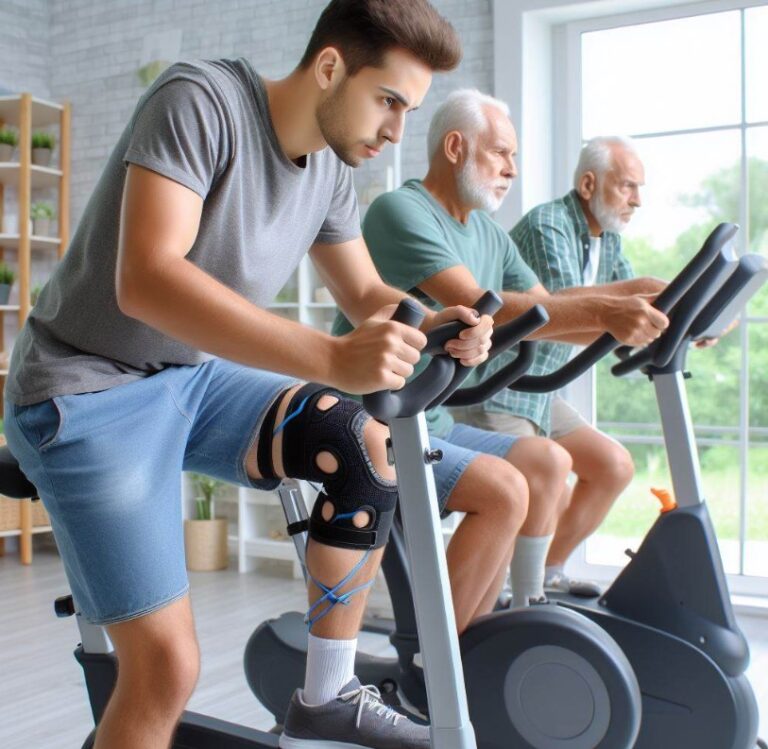What Age Can Kids Ride A Bike? Answered
Learning to ride a bike is a significant milestone in a child’s life, offering a sense of freedom and a boost in confidence. The question “What Age Can Kids Ride A Bike?” often puzzles parents eager to introduce this new adventure. Typically, children are ready to start riding a bike with training wheels between the ages of 3 and 6. However, this can vary based on individual development, balance, and physical coordination.
Key Takeaways
- Most children begin learning with training wheels between 3 and 6 years.
- Balance bikes can help toddlers as young as 18 months start learning.
- Physical coordination, confidence, and interest dictate the right time to start.
- Safety gear is essential from the first ride.
What Age Can Kids Ride A Bike?
Typically, children can start learning to ride a bike with training wheels or a balanced bike from the ages of 3 to 6 years. However, readiness can vary greatly depending on the individual child’s development and confidence.

Understanding Developmental Milestones for Bike Riding
Children reach developmental milestones at their own pace, which influences their ability to ride a bike. Typically, children can start with balance bikes as early as 18 months to 2 years. By the age of 3 to 4, many move onto bicycles with training wheels, which help them learn pedaling and steering while providing stability.
Physical Coordination and Balance
Physical skills such as coordination, balance, and motor skills play a crucial role. Children who have mastered walking, running, and jumping may find it easier to transition to riding a bike.
Emotional Readiness and Confidence
Emotional readiness is just as important. A child must show interest in learning to ride and possess the confidence to try and fail before succeeding. Encouragement from parents can significantly boost their readiness and enthusiasm.
Choosing the Right Bike
Selecting the appropriate bike size and type is crucial for a child’s comfort and safety. The child should be able to sit on the saddle with their feet flat on the ground.
Bike Types and Sizes
Balance bikes, smaller bicycles without pedals, are ideal for toddlers. As children grow, they can transition to larger bikes with training wheels and eventually, standard bikes.
Safety Gear and Precautions
Safety gear, including helmets, knee pads, and elbow pads, is essential from the beginning. Ensure the bike is in good condition and teach your child about safety rules and awareness.
Learning to Ride
Teaching a child to ride involves patience and positive reinforcement. Start in a safe, flat area and progressively challenge them as their confidence grows.
Starting with Balance Bikes
For younger children, balance bikes provide a fun, safe way to learn balance and steering without the complexity of pedaling.
Transitioning to Pedal Bikes
Once a child has mastered balance, transitioning to a pedal bike becomes much smoother. Training wheels can provide additional support during this transition.
Overcoming Challenges
Every child faces different challenges when learning to ride. Fear of falling, frustration, and impatience can hinder progress.
Building Confidence and Resilience
Address fears directly, offer constant encouragement, and celebrate small successes to build confidence and resilience.
Practice and Patience
Regular practice in varied environments can help children become more adept and comfortable. Patience from parents and guardians is key to a positive learning experience.
What Age Should A Child Start Riding A Bike?
The ideal age for a child to start riding a bike varies significantly from one child to another. Most children are ready to begin learning to ride a bike with training wheels or a balanced bike between the ages of 3 and 6 years old.

This age range is suggested because, by this time, children typically have developed sufficient balance, motor skills, and coordination to begin the process.
However, readiness can vary based on individual development, confidence, and interest in biking. Parents should observe their child’s physical capabilities and interest level when introducing them to biking.
Can A 2 Year Old Ride A Bicycle?
Yes, a 2-year-old can start learning to ride a bicycle using a balance bike, which doesn’t have pedals and moves by the child’s feet pushing off the ground. Balance bikes are designed to teach toddlers balance and steering, foundational skills necessary for cycling.
They allow children as young as 18 months to 2 years to begin developing these skills early. However, the focus at this age should be on fun, safety, and learning at the child’s own pace.
Can A 4 Year Old Ride A Bike Without Training Wheels?
A 4-year-old child can potentially ride a bike without training wheels, especially if they have started on a balanced bike at a younger age. Children who begin with balance bikes may develop the necessary balance and coordination to transition to pedal bikes earlier than those who start with training wheels.

However, this is not a universal benchmark; each child’s readiness and ability will vary. Parents should ensure the child feels confident and safe and should provide a supportive and encouraging learning environment.
How Old Can You Take A Child On A Bike?
The age at which you can take a child on a bike as a passenger, typically in a bike seat or trailer, is generally around 9 to 12 months. At this age, children usually have sufficient neck strength to support a helmet and withstand the motion of cycling.
However, it’s essential to check the specific recommendations of the bike seat or trailer manufacturer, as age, weight, and developmental requirements can vary. Always prioritize the child’s safety and comfort and ensure they wear appropriate safety gear.
Conclusion
To conclude, What age can kids ride a bike varies, but with the right approach, children can learn safely and enjoyably. By understanding developmental milestones, choosing the right equipment, and fostering a supportive learning environment, parents can help their children master this life-changing skill.
Emphasize safety, practice, and patience, and remember that each child’s journey is unique. Riding a bike is not just about physical movement; it’s about building confidence, independence, and joy.
Frequently Asked Questions
How do I know when my child is ready to move on from a balance bike?
Your child might be ready to transition from a balance bike to a pedal bike when they can confidently glide, steer, and balance for significant distances without needing to put their feet down. Look for signs of boredom or overconfidence on the balance bike as indicators that they are ready for the next challenge.
What should I do if my child is afraid of falling?
Reassure your child that falling is a part of learning and that it’s okay. Use protective gear to minimize scrapes and bruises. Start on soft surfaces like grass or a slightly inclined, smooth, grassy hill to reduce fear. Stay positive, offer lots of encouragement, and celebrate small achievements to boost their confidence.
How can I ensure my child’s bike ride is safe?
Always ensure your child wears appropriate safety gear, checks the bike’s condition (brakes, tires, etc.), and follows traffic rules and safety tips. Teach them to be aware of their surroundings, avoid riding at night, and stay on bike paths or sidewalks where available. Regularly riding with your child can also help reinforce these safety habits.
Are training wheels necessary?
Training wheels can help some children gain confidence by providing stability, but they don’t teach balance. Many experts recommend starting with a balance bike instead, as it promotes learning balance and steering first, which are crucial for biking. However, if a child feels more comfortable starting with training wheels, they can be a useful tool.

Welcome to the exhilarating world of Matt Rex, a professional car racer turned renowned vehicle enthusiast. Immerse yourself in his captivating blog as he shares heart-pounding adventures, expert reviews, and valuable insights on cars, trucks, jets, and more. Fuel your passion for speed and discover the beauty of vehicles through Matt’s engaging stories and meticulous expertise. Join the ever-growing community of enthusiasts who find inspiration and expert advice in Matt Rex’s blog—a digital hub where the thrill of speed meets the pursuit of knowledge.







